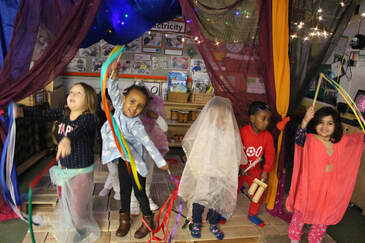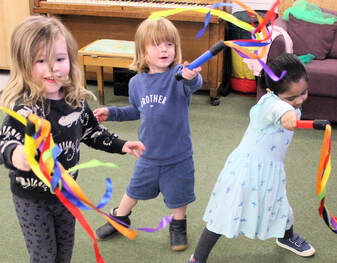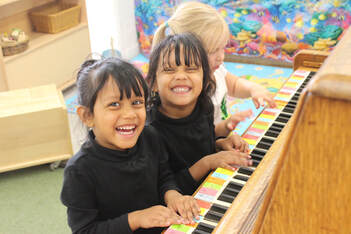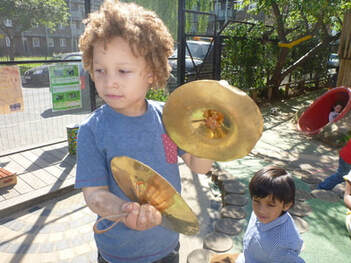5. Create your own rhythmic patterns and respond to music
|
First milestone: children respond to music by moving their whole bodies to sounds they enjoy, such as music or a regular beat. They join in with repeated actions, rhymes and songs. Children also explore sounds made with their voice, bodies, untuned and tuned percussion instruments and create sounds by banging, shaking or tapping.
|
|
Second milestone: children enjoy joining in with dancing and explore rhythmic sounds to make with their own hands, feet, bodies and voices; including silent rhythmic movements such as nodding and shaking heads, tapping shoulders, bending knees, kicking feet and waving hands. Children will accompany tunes using instruments and play the rhythm of songs.
|
|
Third milestone: children explore a wide range of music from different cultural backgrounds and can describe the sudden changes in rhythm and tempo. They also move around using a rhythm that fits the sound and beat they hear. Children follow/copy repeating rhythms with their movements or by using percussion instruments. Introduce rhythms involving beats and pauses, quicker and slower beats. |
As children become more confident in themselves and the space they can follow simple repeating rhythms through dance or playing percussion instruments. |
Final milestone: Children will create their own rhythmic patterns through dance or instrumental sounds. Children will move rhythmically to express ideas, feeling and characters, physically responding to changes in the music.



